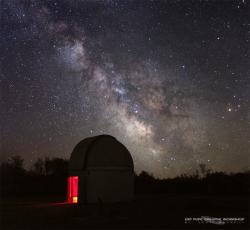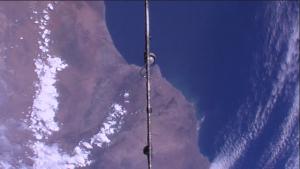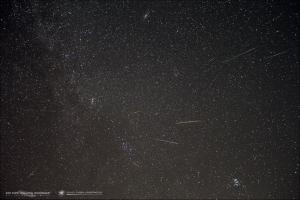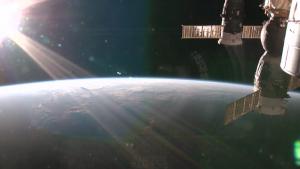
Public Stargazing
- Where:
- Frosty Drew Observatory
- When:
- Friday May 9, 2014 at 6:00 p.m.
- Cost:
- $1 Suggested Donation per Person
Tonight's forecast is calling for rain, t-storms, clouds, and fog. The 78% waxing gibbous Moon will set at 3:03 a.m. and would have offered us excellent views of the lunar surface. With such a dismal forecast, the observatory telescopes will surely remain closed tonight. Though we plan to open the Sky Theatre from 7:00 p.m. - 9:00 p.m. with a presentation on celestial destinations we would have observed tonight showcasing astro-photos taken at Frosty Drew. Skies tonight may be unfavorable but those who visited last Friday night can tell the tale of the awesome view we see on those beautiful, clear, moonless nights at Frosty Drew.
-------------------------------------------------------------------------
Weekly Happenings
Scott MacNeill
Now that the warmer temps and late sunsets are upon us, our thoughts turn to comfortable meteor shower outings on warm summer nights. What better way to spend a summer night than kicked back in an aluminum / nylon chaise lounge, sporting summer attire under a crystal clear sky dazzling with passing meteors. Spring meteor activity kicks off with the April Lyrid shower followed closely by the early May Eta Aquarid shower. Summer will bring the faint Delta Aquarids in July with the most anticipated meteor shower of the summer, the Perseid shower, in August. Well this year we have a totally new meteor shower coming to our skies, possibly debuting with a stunning 200 meteors per hour!
On the morning of May 24, Earth will pass through a stream of debris that originated from comet 209P/LINEAR, possibly producing a meteor shower of storm conditions. Comet 209P/LINEAR is a periodic comet that passes into Earth's orbit every five years as it orbits the Sun. Streams of dust that were ejected from the comet during the 19th century are due to collide with Earth's atmosphere on May 24th as we pass through the concentrated field of debris. The shower has been named the Camelopardalids since it will appear to originate in the sky from the constellation Camelopardalis, the giraffe. Being unsure of the amount of out-gassing the comet experienced during the 1800's leaves a wide gap of expectation, with predicted meteor counts ranging from almost nothing to hundreds per hour. Regardless, the general consensus of the science community is that something is going to happen.
The best time to observe the Camelopardalids is between 2:00 a.m. and 4:00 a.m. EDT on May 24th, which is a Saturday morning. That morning the 18% waning crescent Moon will rise just before 3:00 a.m. and should not interfere significantly with our views of meteors. Since Frosty Drew Observatory will be open that Friday night for Public Stargazing, we will remain open until sunrise ready to welcome the newcomer to our skies! All we need now is for clouds to give us a break that morning.
On April 30, 2014 the High Definition Earth Viewing (HDEV) experiment was activated on the International Space Station (ISS). HDEV is an HD video experiment that will run until October 2015 and will test how different video components and resulting video quality react to the extreme radioactive environments of space. The goal is to establish a hardware baseline for camera equipment installed on future space missions. The experiment consists of four different HD cameras installed on the exterior of the ISS attached to the Columbus External Facility. Each camera is enclosed in a pressurized, temperature controlled box and are orientated to capture video from different viewpoints including a forward view, aft (behind) view, and a nadir (downward) view of Earth as scene from the ISS. 
The High School Students United with NASA to Create Hardware (HUNCH) program was a key player in the development of the experiment which will be operated mostly by students over the life cycle of the experiment. During the experiment, a live HD video stream of Earth will be broadcast across the web for our viewing pleasure.
-Scott


